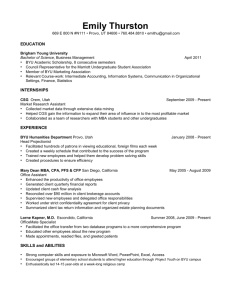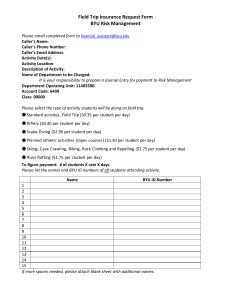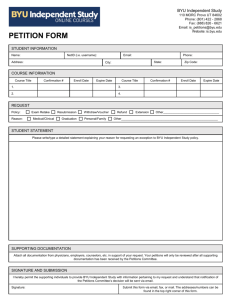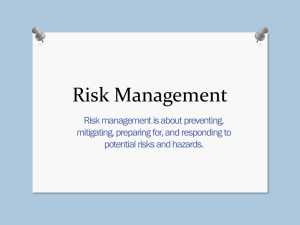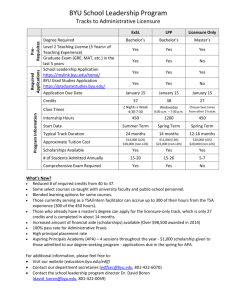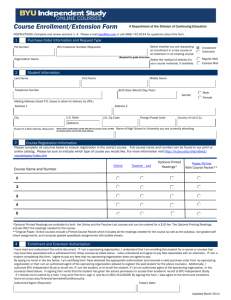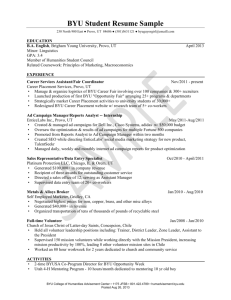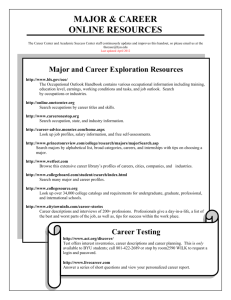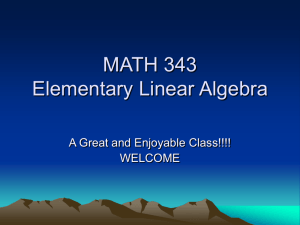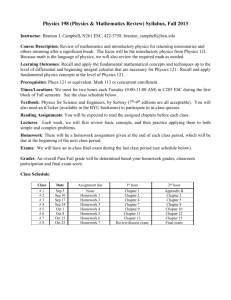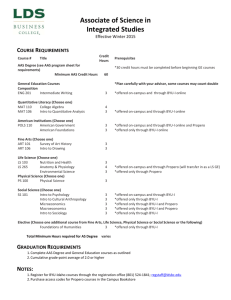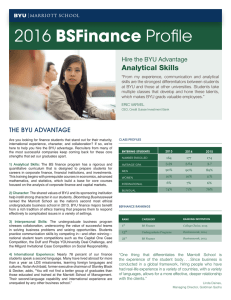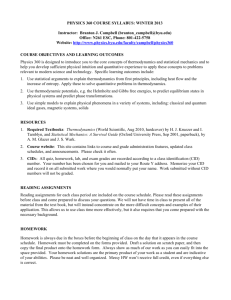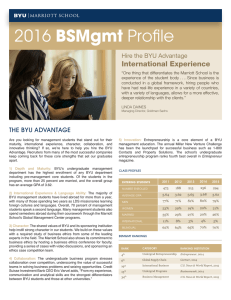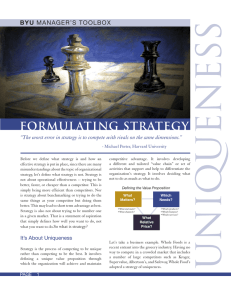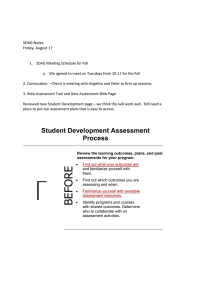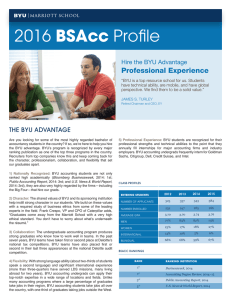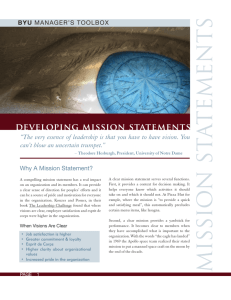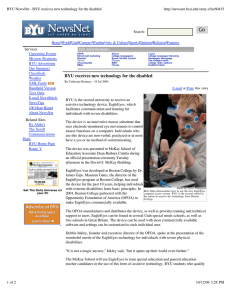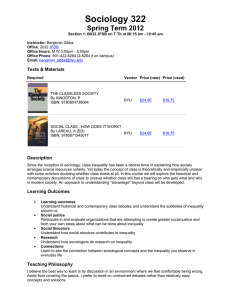Planning Your Course - Center for Teaching & Learning
advertisement
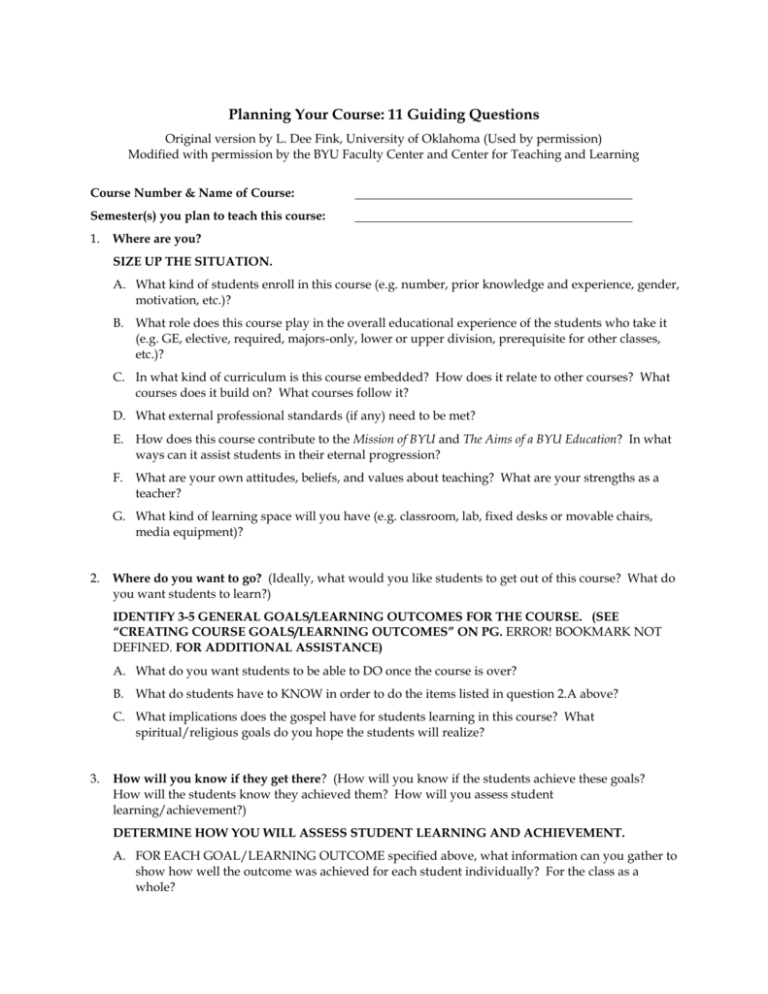
Planning Your Course: 11 Guiding Questions Original version by L. Dee Fink, University of Oklahoma (Used by permission) Modified with permission by the BYU Faculty Center and Center for Teaching and Learning Course Number & Name of Course: Semester(s) you plan to teach this course: 1. Where are you? SIZE UP THE SITUATION. A. What kind of students enroll in this course (e.g. number, prior knowledge and experience, gender, motivation, etc.)? B. What role does this course play in the overall educational experience of the students who take it (e.g. GE, elective, required, majors-only, lower or upper division, prerequisite for other classes, etc.)? C. In what kind of curriculum is this course embedded? How does it relate to other courses? What courses does it build on? What courses follow it? D. What external professional standards (if any) need to be met? E. How does this course contribute to the Mission of BYU and The Aims of a BYU Education? In what ways can it assist students in their eternal progression? F. What are your own attitudes, beliefs, and values about teaching? What are your strengths as a teacher? G. What kind of learning space will you have (e.g. classroom, lab, fixed desks or movable chairs, media equipment)? 2. Where do you want to go? (Ideally, what would you like students to get out of this course? What do you want students to learn?) IDENTIFY 3-5 GENERAL GOALS/LEARNING OUTCOMES FOR THE COURSE. (SEE “CREATING COURSE GOALS/LEARNING OUTCOMES” ON PG. ERROR! BOOKMARK NOT DEFINED. FOR ADDITIONAL ASSISTANCE) A. What do you want students to be able to DO once the course is over? B. What do students have to KNOW in order to do the items listed in question 2.A above? C. What implications does the gospel have for students learning in this course? What spiritual/religious goals do you hope the students will realize? 3. How will you know if they get there? (How will you know if the students achieve these goals? How will the students know they achieved them? How will you assess student learning/achievement?) DETERMINE HOW YOU WILL ASSESS STUDENT LEARNING AND ACHIEVEMENT. A. FOR EACH GOAL/LEARNING OUTCOME specified above, what information can you gather to show how well the outcome was achieved for each student individually? For the class as a whole? B. For each goal, what is the most appropriate form of assessment (e.g. multiple-choice exam, essay, project assignment, writing assignment, performance, other products)? 4. How can you help them get there? That is, what kinds of learning activities will effectively help students achieve the course learning outcomes? Based on the research on how college students learn—and retain what they learn—students need engaging learning activities in which they learn actively rather than passively. “Learning is not a “spectator sport.” DETERMINE SPECIFIC LEARNING ACTIVITIES THAT WILL HELP STUDENTS ACHIEVE THE COURSE LEARNING OUTCOMES. A. FOR EACH OUTCOME listed in #2, what learning activities will best help students achieve these outcomes? B. What activities will generate learning that lasts? C. Is there VARIETY in the activities? 5. What are the students going to do and when? SELECT A GENERAL STRATEGY AND A SEQUENCE OF ACTIVITIES. Example strategies: A. Sequence of reading, reflective writing, and whole class discussion (sequence repeated for each topic). B. Start with lab or field work observations (and writing reports), followed by readings, and whole class discussions. C. Students do assigned readings, followed by quizzes done individually and/or in small groups; then move on to group-based application projects. D. Work through a series of developmental stages: build knowledge and/or skills (3-5 weeks); work on small application projects (3-5 weeks); and then work on larger, more complex projects (3-5 weeks). E. Contract for a grade (for example; read text and pass exams = C; do research paper = B; extended project = A). F. 6. Other? Debates, role plays, group projects, peer review of writing, presentations. When are you going to do what? DEVELOP A SEQUENCE OF ACTIVITIES, A WEEK-BY-WEEK SCHEDULE FOR THE WHOLE TERM. A. What activities need to come first? B. What activities do you want to conclude with? C. What activities do you need in the middle? 7. Who/What can help? LOCATE RESOURCES. What resources do you need (and can you get) to support each of the goals listed in #2 (e.g. people, places, and things, including media)? 8. How are you going to grade? DEVELOP YOUR GRADING SYSTEM. A. Your system should reflect assessment of the full range of learning goals and activities. (Remember, NOT everything has to be graded.) B. The relative weight of each item on the course grade should reflect the relative importance of that activity in relation to the whole course. 9. What could go wrong? (De-bugging the design) ANALYZE AND ASSESS THIS “FIRST DRAFT” OF THE COURSE. A. What kinds of situations might arise as you implement this course? For example, will students be motivated to do the work? What if they're not? B. Does the design encourage student involvement? C. Will students get sufficient feedback on their performance? D. How can you prevent (or at least minimize) problems? E. Make the necessary modifications in the design. 10. Let them know what you're planning. WRITE THE SYLLABUS. The syllabus should include, among other things: General management information: instructor, office hours, phone, etc. Goals for the course Structure and sequence of class activities including major assignments/tests/projects Due dates Text and other required reading material Grading procedures Course policies: attendance, ethics, make-up assignments/exams, etc. For a more complete guide, see: ctl.byu.edu/home/tools/syllabus-builder 11. How will you know how the course is going? How it went? PLAN AN EVALUATION OF THE COURSE ITSELF, YOUR OWN TEACHING, AND ESPECIALLY THE STUDENTS’ ACHIEVEMENT OF LEARNING OUTCOMES. A. How will results of student assessments be compiled and used to determine if learning outcomes have been achieved? B. What went well? What concerns do you have about the course? How effective are particular learning activities? How effective are the assessments of student learning? C. What sources of information, in addition to assessments of student learning, can help you answer the above questions? Student feedback and interviews, questionnaires, CTL consultants, peer observers, Students Consulting on Teaching (SCOT), BYU student ratings of instruction, etc. Find additional information on the CTL website (ctl.byu.edu) under “Evaluating a Course.” Document URL: http://goo.gl/vFXWC
